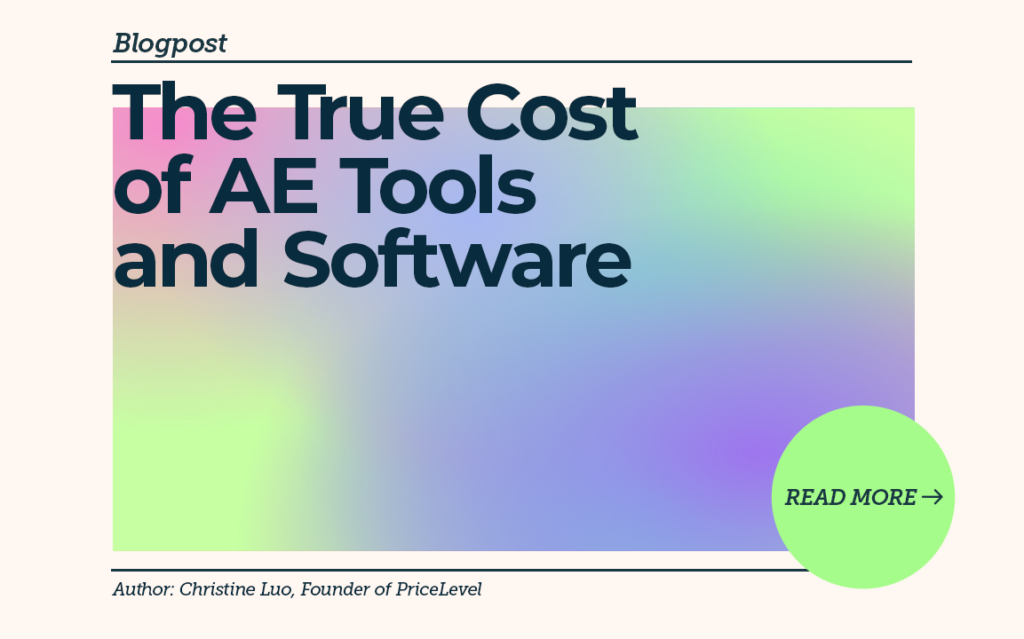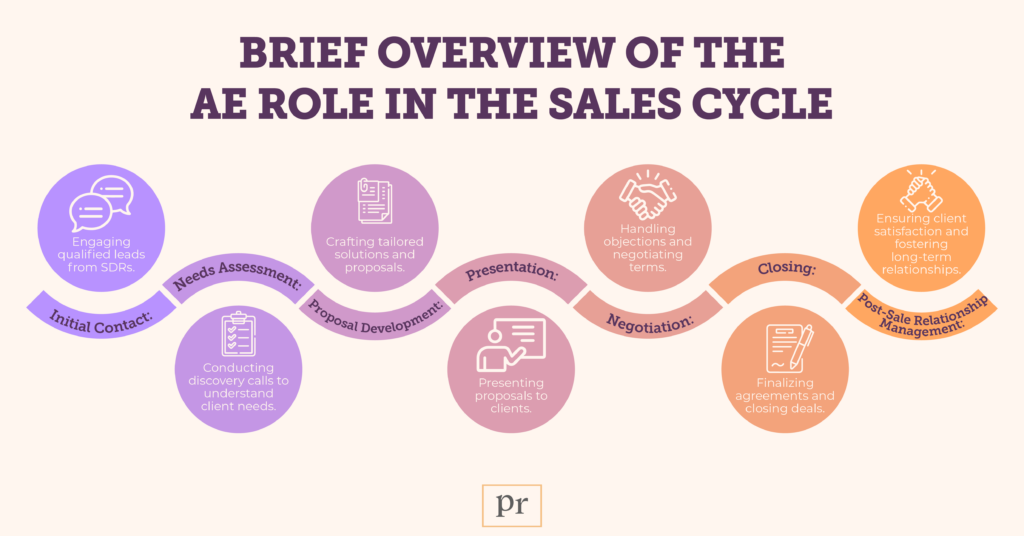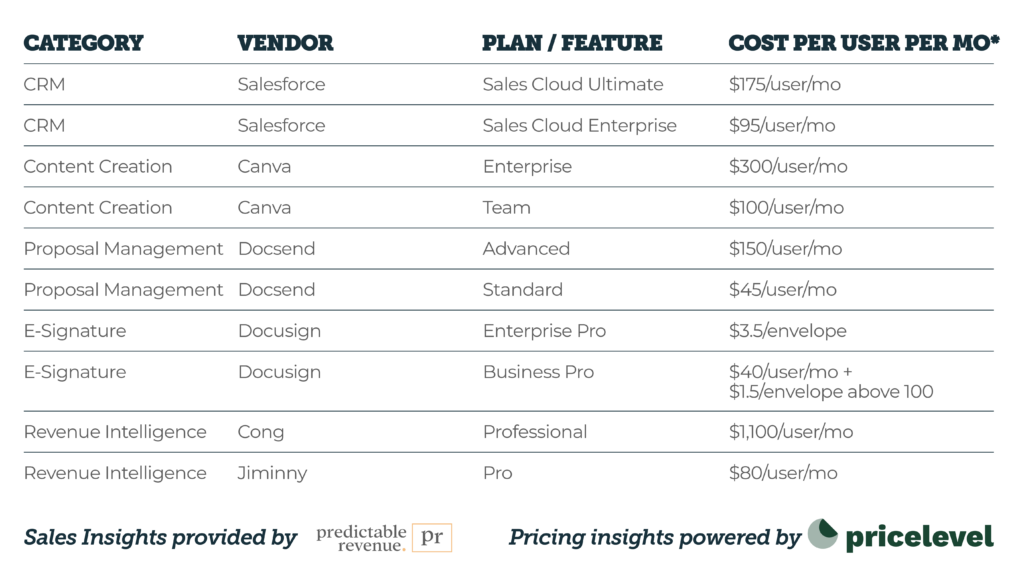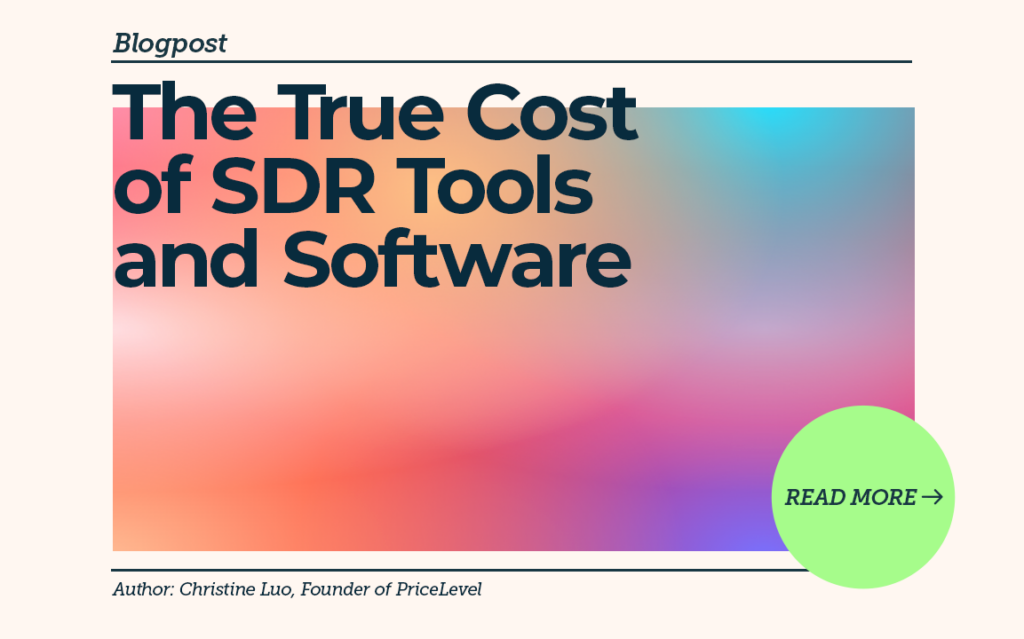The True Cost of AE Tools and Software

Author: Christine Luo, Founder of PriceLevel
Welcome back to the series, where we explore the true cost of a deal by examining the tools and software costs associated with each role in the sales process. Predictable Revenue and PriceLevel have partnered to provide pricing transparency and a deeper understanding of the cost structures in the sales tech stack.
Last time, we dove into the true cost of SDR tools and software. This time, we’ll dive into Account Executives, better known as AEs.
AEs are a crucial link between a company and its future customers. They focus on acquiring new business and driving revenue by establishing relationships with potential customers, pitching the company’s products, and negotiating contracts to close deals.
This complex role uses various tools to ensure they put the company’s best foot forward and persuade the customer to buy their solution. We’ve created fictional case studies using a 10-person sales team and a 100-person sales team to highlight the true cost of the AE tech stack.
Role and responsibilities of an AE
Account Executives are at the forefront of revenue generation at sales-led companies. It’s a role that requires strong communication and problem-solving skills to ensure potential customers understand the company’s offerings and how they improve their lives.
The ultimate goal is to close deals and generate revenue for the company while hitting their own sales targets.

To achieve that goal, an AE organizes their day with activities revolving around customer conversations and closing deals. They may spend any given hour researching upcoming client calls, delivering sales presentations and product demos over calls, drafting pricing proposals, updating the CRM with detailed notes, and responding to questions from prospects.
In addition, AEs also collaborate with internal teams to discuss ways to meet client needs.
AE’s are typically goal-based on conversion and/or revenue metrics that closely align with the company goals. Examples include, but are not limited to:
- Total sales revenue generated
- Percentage of sales target achieved
- Number of new customers closed
- Percentage of prospects converted into customers
- Average deal size or annual contract value
The role of an AE is often unique within a company because of its compensation structure. AEs often receive a mix of base salary and variable compensation.
Variable compensation can take the form of commission tied to hitting sales, revenue targets, or bonuses. This highly incentivizes an AE to close deals, requiring a company to provide the right tools and software.
The AE tech stack
To close deals efficiently and effectively, AE’s rely on various tools to streamline communication, automate documentation creation, and track their progress toward their goals.
A common AE tech stack includes:
- Customer relationship management (CRM) software – for more advanced CRM features that AE’s frequently utilize, Salesforce Sales Cloud is the go-to tool to manage prospect data, schedule follow-up activities, and collaborate internally with the wider sales team.
- Sales content creation platforms – Canva is the most popular tool for managing brand assets and creating professionally-designed proposals.
- Proposal and contract management tools – Docsend and Papermark are examples of software that help AE’s understand how their prospects are engaging with proposals. For more robust contract management tools, Ironclad is the industry leader.
- E-signature platforms – tools like Docusign, Dropbox Sign, or PandaDoc provide seamless contract execution. AEs can customize the order of signatures and view the history for audit purposes.
- Revenue intelligence tools – platforms like Gong, Salesloft, or Jiminny allow AEs to record client calls, forecast deal pipelines, and share relevant snippets with internal teams. Sales managers also love these tools to respond to calls to hire quality assurance engineers and training opportunities.
Depending on the team size and usage level, this tech stack can vary wildly in cost. Unfortunately, it’s difficult to find public pricing for many of these tools to understand the true cost, but fortunately, PriceLevel has pricing comps and negotiated discounts that other buyers have actually gotten for their AE tech stack.
Decoding the cost of AE tools and software
To understand the true cost of the AE tech stack, we’ll use fictional case studies of a 10-person sales team and a 100-person sales team.
First, let’s set the baseline cost for these AE tools:

*Prices actual buyers pay for these vendors. The cost is for an annual subscription. Source: PriceLevel
The true cost of the AE tech stack: 10-person sales team
Growing sales teams often utilize lower tiers of the same vendors as enterprise sales teams. This allows companies to grow into more expensive tiers.
To build this fictional case study for the 10-person sales team, we’ll mostly use the same tools but on cheaper plans:

Source: PriceLevel
At a 10-person sales team, the annual true cost of the AE tech stack is $439,500 or $43,950 per salesperson.
The true cost of the AE tech stack: 100-person sales team
The pricing becomes more opaque once the sales team hits an enterprise scale. The benefit is that larger teams get volume discounts, so the per sales person costs decrease.
For this example, we’ll build the AE tech stack using the highest tiers for each vendor:

Source: PriceLevel
At a 100-person sales team, the annual true cost of the AE tech stack is $2,010,000 or $20,100 per salesperson.
Conclusion
Many factors go into the true cost of the AE tech stack including the vendor, plan or features purchased, annual revenue, and size of the sales team. Companies should thoroughly research all available options to find the best fit for the team’s needs and budgets.
Most companies have heard of the big names like Salesforce and Gong, but smaller competitors are out there with substantial features.
Investing in the tech stack is vital to the success of an AE. The best tools give AEs the best chance to close deals and generate revenue for the company while hitting sales targets to achieve full variable compensation.
Once a deal is closed, the customer is transitioned over to Account Managers, who we’ll focus on next.
